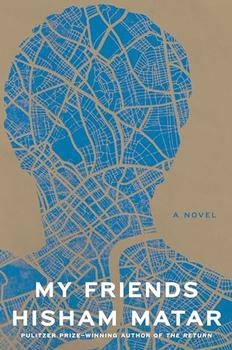Summary | Excerpt | Reviews | Beyond the Book | Readalikes | Genres & Themes | Author Bio

The British Colonies and the Creation of the Urban World
by Tristram Hunt
In one sense, an account of imperialism pursued through urban history is obvious. While colonization might have begun as a rural pursuit, primarily involved in the extraction of mineral or agricultural wealth from foreign lands, it could not prosper without the development of an urban infrastructure to ship the riches back home. Initially, this meant the establishment of ports–such as Bridgetown for sugar, Boston for fisheries or Melbourne for gold–and then the emergence of more complicated economies around them, from ship-building to financial services to foodstuffs, leisure and retail. With these early settlements came the first springs of civic ambition. In the pioneering Ulster plantations of the late sixteenth century, there were grand plans to erect a new capital, Elizabetha. Similarly, the promoters of the Berkeley Plantation in Virginia in 1619 commissioned their representative Captain John Woodleefe 'to erect and build a town called Barkley and to settle and plant our men and diverse other inhabitants there, to the honour of Almighty God, the enlarging of Christian religion, and to the augmentation and revenue of the general plantation in that country, and the particular good and profit of ourselves, men and servants as we hope'.19 Neither of those planned cities came to fruition. But in colonies which did contain significant commercial and strategic assets, the resources allocated to cities by central authorities rapidly escalated to cover the erection of garrisons, and places of worship, the establishment of industry and all the accoutrements of settler life. Nine out of ten of the cities in this book began their imperial lives as port economies.20
Most of them also attest to the defining attributes of colonial cities, as first set out by the urban historian Anthony D. King: power primarily in the hands of a non-indigenous minority; the relative superiority of this minority in terms of technological, military and organizational power; and the racial, cultural and religious differences between predominantly European, Christian settlers and the indigenous majority.21 In these terms, a history of British imperial cities could be matched byan account of their German, Spanish or, most usefully, French counterparts–with the development of, say, Pondicherry, Casablanca or Saigon offering equivalent insights into French imperial development. Of course, the impulses were different for each colonial power, and the totalizing nature of France's 'civilizing mission' was recorded much more deliberately in those cities' urban design and architecture.
Yet, whether it is Hong Kong or Mumbai, or indeed Shanghai or Dubai (two cities not included in this study), it is notable how Britain's imperial cities currently play a far more significant role in world affairs than those of any other former European power. At the peak of British imperial dominion, in the late nineteenth and early twentieth centuries, the economic and cultural driver of Empire was a chain of major colonial cities–Bombay, Singapore, Melbourne. The advent of the steamship and telegram network, the cutting of the Suez Canal and increase in shipping, the acceleration of global trade in the lead-up to the First World War and the role of these cities as entrepôt and export hubs gave them a powerful, semi-autonomous place within the imperial hierarchy as engines of global growth. Funds from London, Paris and Berlin finance houses were sunk into major infrastructure schemes–docks, railways, trams–as well as used to open up the colonial hinterland.
Today, one hundred years on, the world is witnessing a revival of the global city-state. Not only does the majority of the world's population now live in urban areas (with tens of millions–across Africa, China and India–accelerating the rate of urbanization each passing year), the top twenty-three 'megacities' contribute by themselves some 14 per cent of global GDP.22 Urban theorist Saskia Sassen has identified 'global cities'–those cities that function as 'command points in the organization of the world economy', provide 'key locations for specialized service firms' and operate as 'sites of production, including the production of innovations. . . and markets for the products and innovations produced'–as the economic powerhouses of the modern era.23 And, rather like the port cities of the European empires, they operate increasingly outside the traditional framework of the nation state. In
Excerpted from Cities of Empire by Tristram Hunt. Copyright © 2014 by Tristram Hunt. Excerpted by permission of Metropolitan Books. All rights reserved. No part of this excerpt may be reproduced or reprinted without permission in writing from the publisher.




A few books well chosen, and well made use of, will be more profitable than a great confused Alexandrian library.
Click Here to find out who said this, as well as discovering other famous literary quotes!
Your guide toexceptional books
BookBrowse seeks out and recommends the best in contemporary fiction and nonfiction—books that not only engage and entertain but also deepen our understanding of ourselves and the world around us.